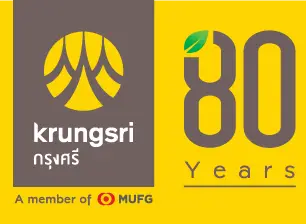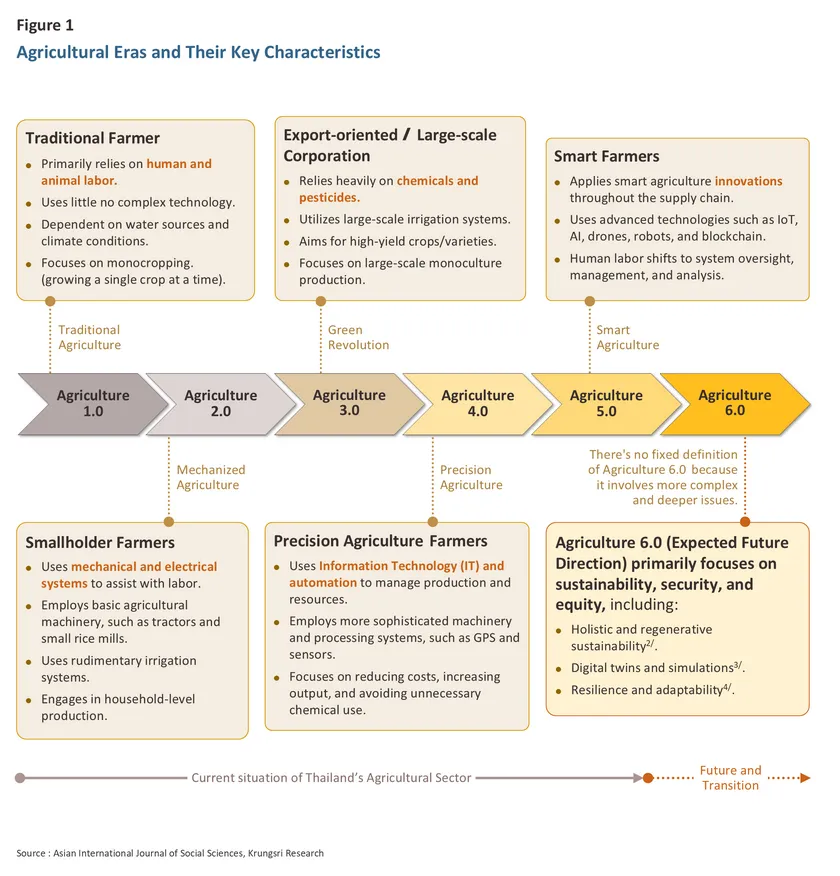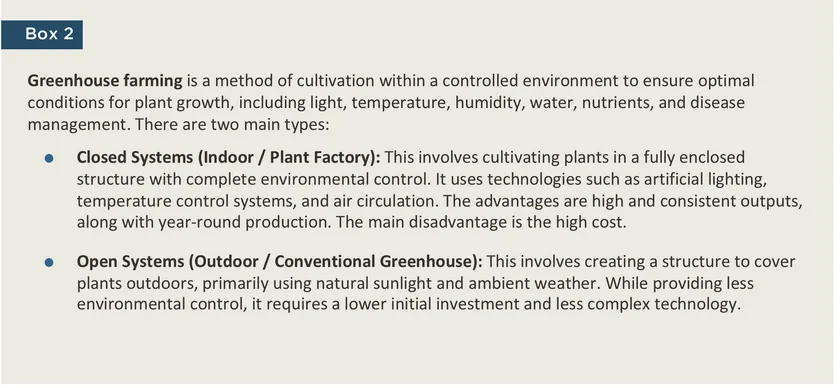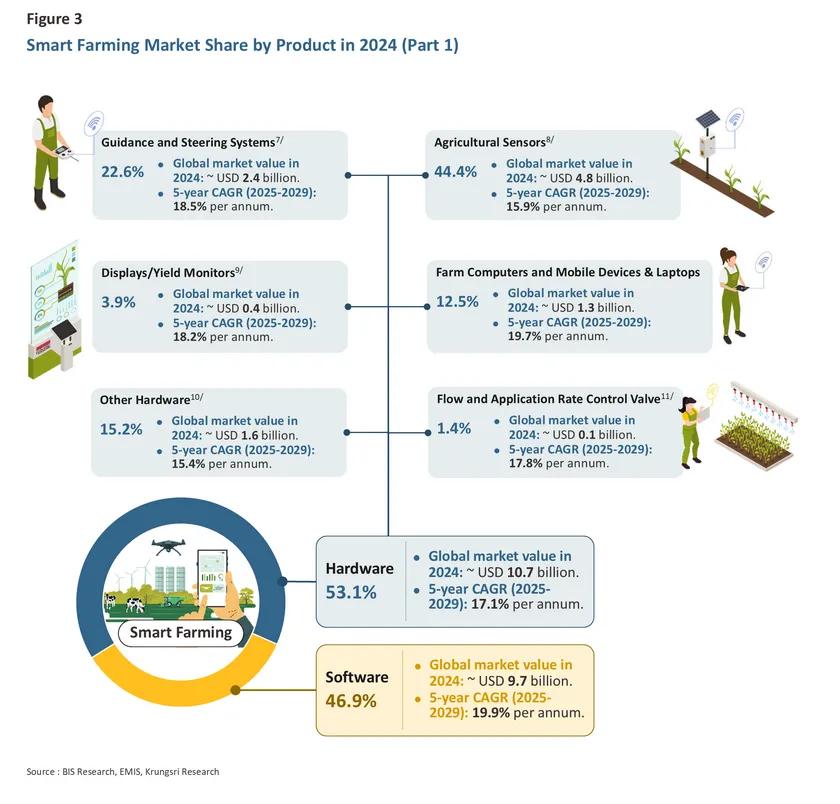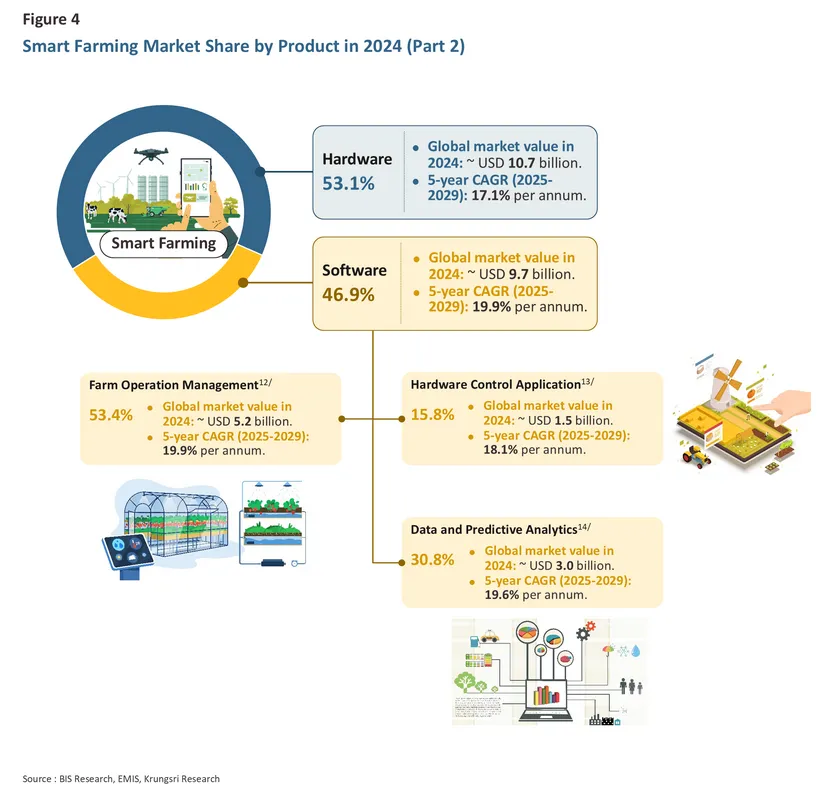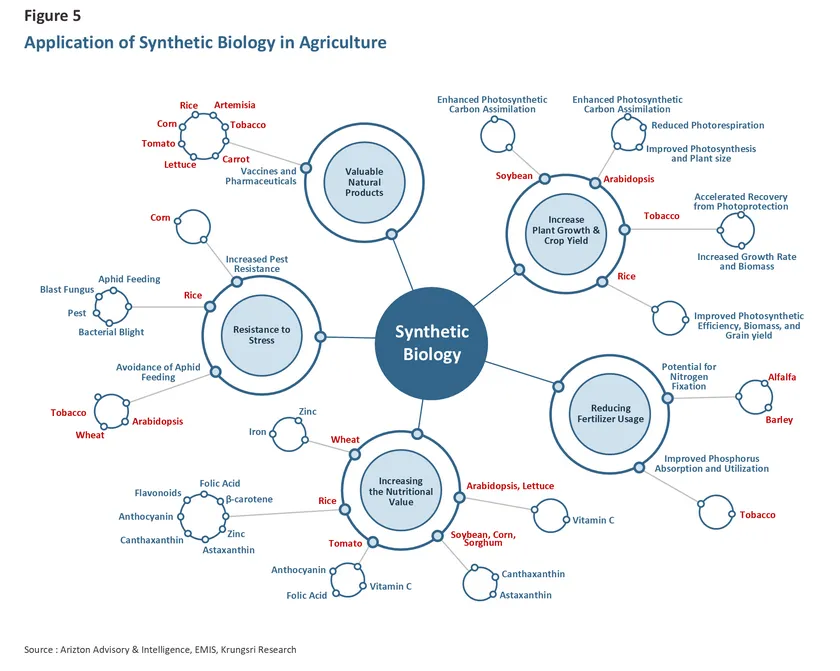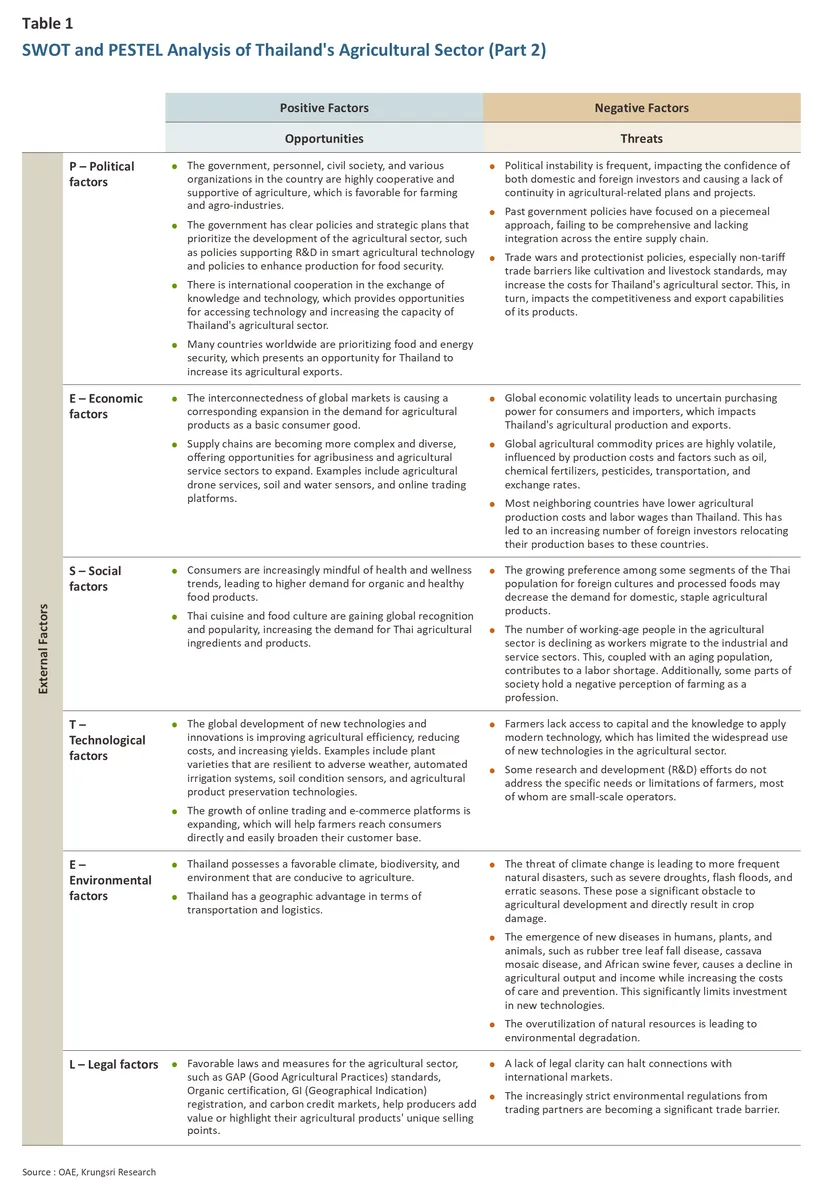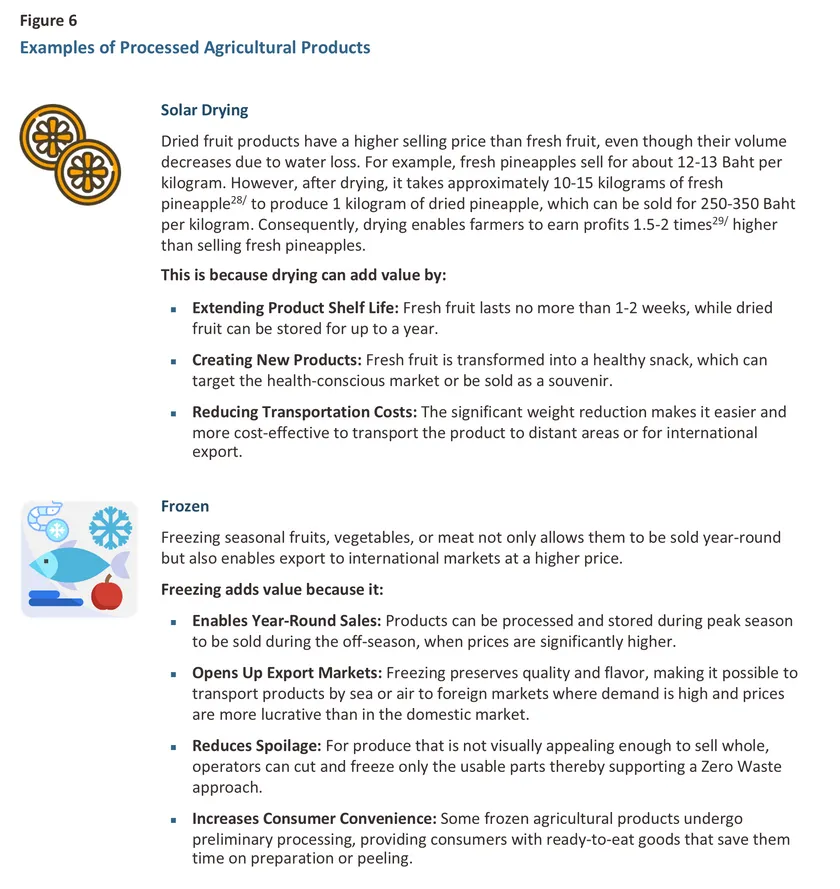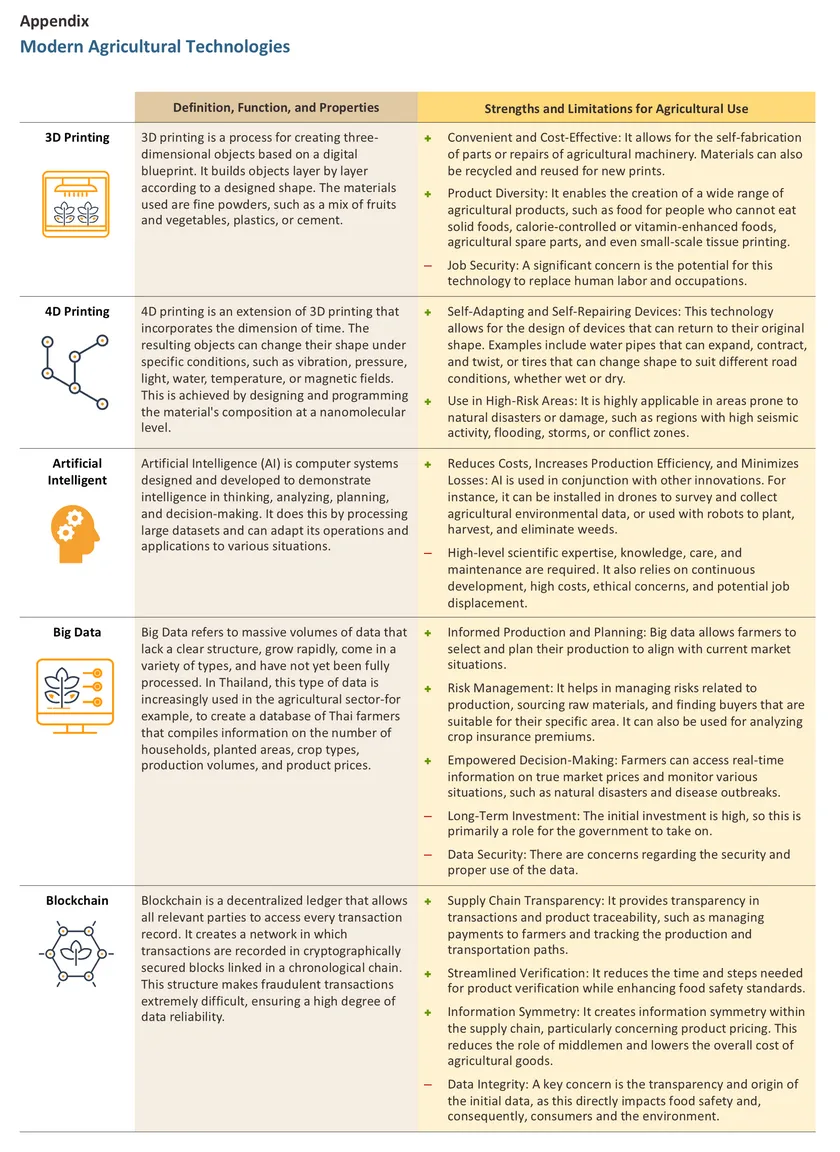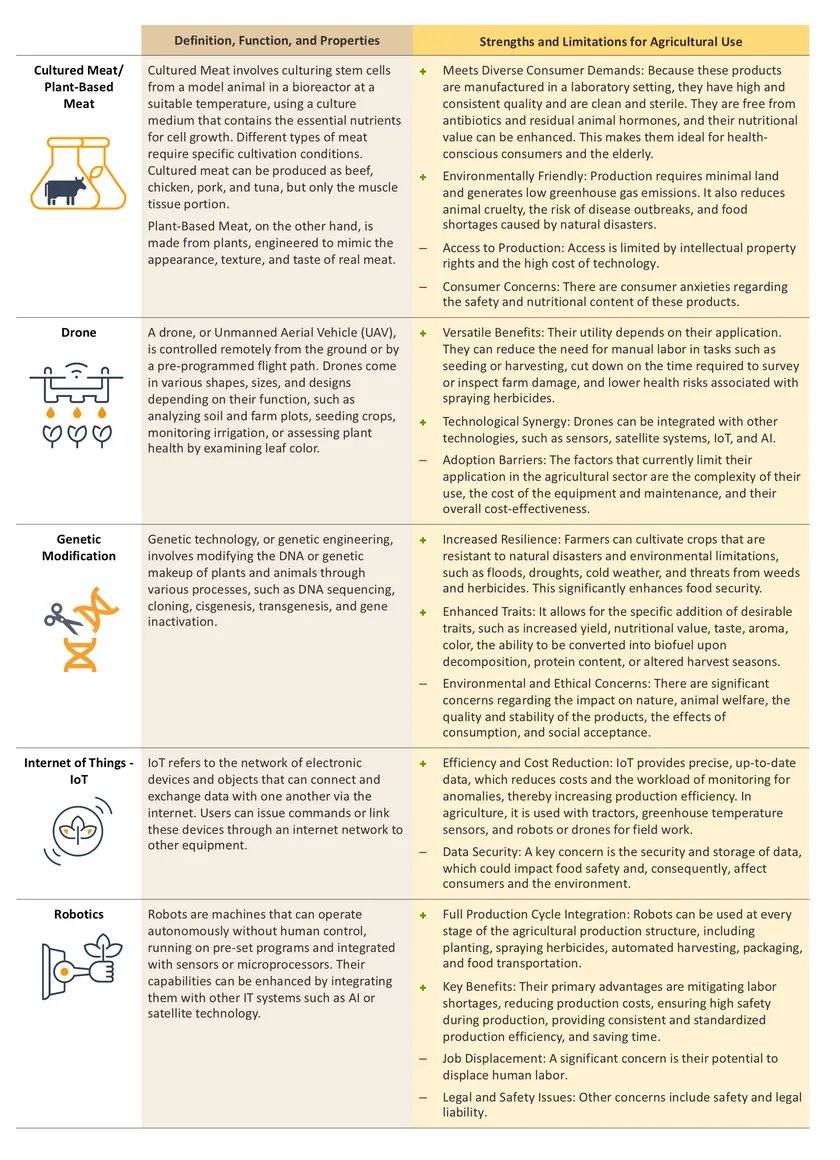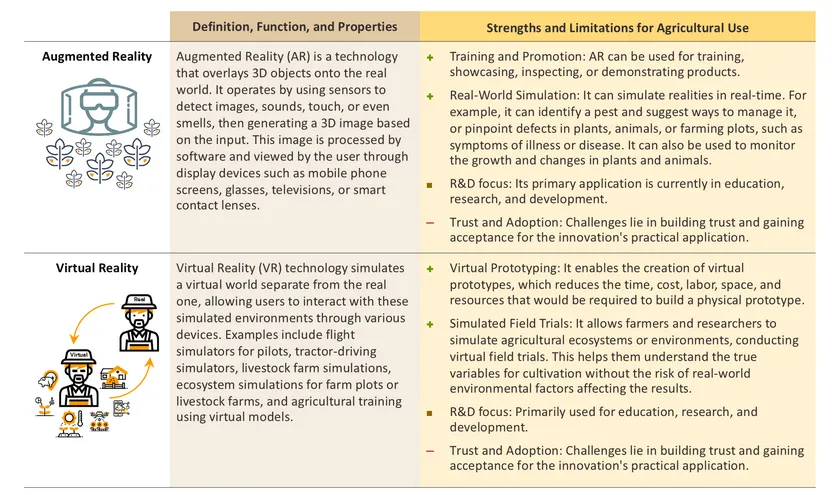Based on the analysis, a multi-stakeholder approach is necessary to accelerate the transformation of Thai agriculture. Key stakeholders, in particular, should focus on the following:
In addition to these marketplaces, the government has developed platforms to facilitate new agricultural entrepreneurs, such as OAE Ag-Info
37/, Farmbook Application
38/, Kaset One Farmer, Biz Portal
39/, and SME One ID
40/. These platforms enhance transaction efficiency and business matching within Thailand's agricultural ecosystem.
3) Smart Farming Technologies for Cost Reduction and Efficiency Improvement: If farmers can use basic digital technology, as well as small-scale machinery or equipment, or have sufficient investment capital for modern technology, they can apply the following:
-
Manage > Precision Management: Farmers can utilize basic technologies such as: 1) smartphone applications combined with simple soil testing kits to analyze crop nutrient needs and optimal water levels, providing quick information for immediate problem-solving; and 2) applications or platforms with accurate weather forecasts or information on regional plant disease outbreaks, enabling farmers to prepare and prevent damage in a timely manner, reducing losses and the cost of rehabilitating their plots.
-
Machine > Small-Scale Machinery: The market now offers an increasing number of small agricultural machinery products tailored for small farm plots, such as walking tractors, tillers, and drones for small-area spraying. These machines are becoming more affordable and offer multiple functions, making them more convenient to use than larger machinery.
The aforementioned approaches demonstrate that a sustainable transformation of Thailand’s agricultural sector does not depend solely on expensive technologies. Rather, it must be adapted to the realities of the country's smallholder farmers. The government should serve as a central hub for building a digital agricultural ecosystem that effectively connects farmers to knowledge, information, and markets. The priority is to promote access to technologies that are easy to use, low-cost, and deliver tangible results, whether for learning, data-driven decision-making, or market access. Such measures will help reduce production risks, increase returns, and strengthen long-term livelihood security. Ultimately, the transition to a new agricultural era will only be successful when every farmer can truly utilize technology as a tool to improve their quality of life.
References
ACIL Allen Consulting (2018). Emerging Technologies in Agriculture : Regulatory & Other Challenges. Retrieved from https://www.agrifutures.com.au/wp-content/uploads/2019/01/18-047.pdf
BIS Research (2024). Smart Specialty Crop Farming Market – A Global and Regional Analysis. Retrieved from EMIS
Bo Bi, Wei Li, Yushu Jiang, Hao Du (2022). Present and future prospects of crop synthetic biology. Retrieved from https://www.sciencedirect.com/science/article/pii/S2772899422000179#bib86
Chantarat, S., et al. (2019). The aging situation, productivity, and farming of Thai agricultural households. Article from aBRIDGEd, PIER. จาก https://www.pier.or.th/?post_type=abridged&p=6704
European Commission (2017). Industry 4.0 in Agriculture : Focus on IoT Aspects. Retrieved from https://ec.europa.eu/growth/tools-databases/dem/monitor/content/industry-40-agriculture-focus-iot-aspects
European Parliament’s Committee on Agriculture and Rural Development (2019). Impacts of the digital economy on the food chain and the CAP. Retrieved from https://www.europarl.europa.eu
Evan D.G. Fraser, Malcolm Campbell (2019). Agriculture 5.0: Reconciling Production with Planetary Health. Retrieved from https://www.cell.com/one-earth/pdf/S2590-3322(19)30136-8.pdf
Food and Agriculture Organization of the United Nations (2017). The future of food and agriculture: Trends and challenges.
Food and Agriculture Organization of the United Nations (2019). OECD-FAO Agricultural Outlook 2019-2028. Retrieved from http://www.agri-outlook.org/Outlook-Summary-ENG.pdf
Food and Agriculture Organization of the United Nations (2020). Food Loss and Waste Database. Retrieved from http://www.fao.org/platform-food-loss-waste/flw-data/en/
Food and Agriculture Organization of the United Nations, Nikola M. Trendov, Samuel Varas, and Meng Zeng (2019). Digital Technologies in Agriculture and Rural Areas. Retrieved from http://www.fao.org/3/ca4887en/ca4887en.pdf
Francesco Castellano. Feeding the Future : An Overview of Agrifood Technology., and Feeding the Future : An Overview of Agrifood Industry. Retrieved from https://www.novu.ventures/insights
Fuglie, Keith, et al. (2020). Harvesting Prosperity: Technology and Productivity Growth in Agriculture. World bank group.
GHD and AgThentic (2018). Emerging Technologies in Agriculture : Consumer Perceptions Around Emerging Agtech. Retrieved from https://www.agrifutures.com.au/wp-content/uploads/2019/01/18-048.pdf
Global Forum on Agricultural Research and Innovation (GFAR), Global Open Data for Agriculture and Nutrition (GODAN), The Technical Centre for Agricultural and Rural Cooperation (CTA) (2018). Digital and Data-Driven Agriculture : Harnessing the Power of Data for Smallholders. Retrieved from https://f1000research.com/documents/7-525
Handelsblatt Research Institute, BAYER. The Future of Agriculture and Food. Retrieved from https://www.bayer.com/en/bay-landwirtschaft-ernaehrung-fakten-en-final.pdfx?forced=true
International Institute for Sustainable Development (2019). Transforming Agriculture in Africa & Asia: What are the policy priority.
John H. Tibbetts (2019). Agriculture Disruption : New technology, consolidation, may yield production gains, job upheaval. Retrieved from https://academic.oup.com/bioscience/article-abstract/69/4/237/5382228
McKinsey & Company (2017). Successful agricultural transformations: Six core elements of planning and delivery. Retrieved from https://www.mckinsey.com/industries/chemicals/our-insights/successful-agricultural-transformations-six-core-elements-of-planning-and-delivery
McKinsey & Company (2017). Readiness for agricultural transformation. Retrieved from https://www.mckinsey.com/industries/chemicals/our-insights/readiness-for-agricultural-transformation
Office of Agricultural Economics (2022). Agricultural Action Plan 2023-2027.
Office of Agricultural Economics (2023). Agricultural Action Plan to Cope with Climate Change 2023-2027.
Oliver Wyman (2018). Agriculture 4.0 : The Future of Farming Technology. Retrieved from https://www.oliverwyman.com/our-expertise/insights/2018/feb/agriculture-4-0--the-future-of-farming-technology.html
Ratanavararak, L. et al. (2019). Digital technology and enhancing the quality of life for Thai farmers. Article from aBRIDGEd, PIER. จาก https://www.pier.or.th/?post_type=abridged&p=6710
Sarah Nolet and Cass Mao, AgThentic (2018). Accelerating the Development of Agtech Solutions Worth Adopting : Challenges and Opportunities for Effective Value Proposition Design in Australian Agtech. Retrieved from https://www.agrifutures.com.au/wp-content/uploads/2018/10/AGF040-NRI-Agtech-A4-S3V1-Digital-Spreads.pdf
Silke de Wilde, STT, The Hague (2016). The Future of Technology in Agriculture. Retrieved from https://stt.nl/wp-content/uploads/2016/05/ENG-Toekomstverkenning-agri-food-Web.pdf
Technology Quarterly (2016). The Future of Agriculture. Retrieved from https://www.economist.com/technology-quarterly/2016-06-09/factory-fresh
The Business Research Company (2025). Global Greenhouse Horticulture Market Report 2025. Retrieved from EMIS
Technavio (2025). Global Hydroponics Technologies Market 2025-2029. Retrieved from EMIS
Ulrich Adam (2017). Agriculture 4.0 – the Challenges Ahead & What to Do About Them. Retrieved from https://www.economist.com/technology-quarterly/2016-06-09/factory-fresh
1/ Source : United Nations Population Division, 2025
2/ Holistic and Regenerative Sustainability: This approach to farming takes a holistic view of the entire ecosystem. It includes practices such as Zero Waste production, converting agricultural byproducts into value-added resources, and farming that actively regenerates natural resources, with objectives to reduce reliance on new resources, create a natural balance, and ensure long-term sustainability.
3/ Digital Twins and Simulation: This involves creating a virtual replica of an entire farm or a specific part of it. This digital twin is linked to real-time data, allowing for experimentation, improvements, and the prediction of outcomes for various changes within the farm before implementing them physically. This process helps to reduce risk and increase crop efficiency.
4/ Resilience and Adaptability: This is the process of designing the agricultural sector to be highly flexible, capable of adapting to and coping with climate change, disasters, and shifts in production plans. It also involves securing a reserve of agricultural products to ensure food security.
5/ The Agriculture Value Chain begins with the preparation of raw materials, which are then fed into the production process. After cultivation, the produce is harvested, processed, or packaged. It is then stored for future use or transported for distribution to various locations to ultimately be sold to consumers.
6/ For definitions and applications of specific technologies, please refer to the appendix.
7/ Guidance and Steering Systems: Using navigation and positioning technology, these systems allow for the automated control of machinery, increasing the precision and efficiency of planting, fertilizing, and harvesting.
8/ Agricultural Sensors: These sensors are used to collect and transmit data on soil conditions, weather, pest activity, and plant health. The critical environmental and biological data they provide offers real-time insights, which are essential for making data-driven decisions to optimize crop management and yield.
9/ Displays/Yield Monitors: These devices display various physical properties such as temperature, humidity, pressure, pH levels, and soil moisture. They collect and analyze large datasets and then present this information to the farmer, thereby enhancing agricultural efficiency through precise data management and real-time monitoring.
10/ Include automated harvesters and planters, drones and aerial imaging systems, and feed management systems.
11/ Flow and Application Rate Control Valves: These valves are equipped with control mechanisms to accurately regulate and monitor the flow of liquids. This helps to optimize the use of water and nutrients for plants and animals.
12/ Farm Operation Management Software: This software has a wide range of functions, including automated farm data logging and storage, monitoring and analysis of farm activities, tracking expenses and revenue, financial management through accounting programs, farm planning support systems, purchasing functions, and marketing tools. Farm management software helps farmers efficiently plan production, farm operations, and daily tasks.
13/ Hardware Control Application: This is a program that manages and coordinates computer devices and other hardware to ensure efficient operation. Examples include software used with hardware that controls fluid systems, or farming robots/drones used for automated tasks like sowing seeds, watering plants, fertilizing, and pest control.
14/ Data and Predictive Analytics Software: This software focuses on analyzing farm data from sensors or farmer-input data, covering variables such as humidity, weather, and water flow. Integrated with Artificial Intelligence (AI) and Machine Learning, this software enables farmers to make informed decisions, conduct predictive analysis, and optimize crop or livestock management processes to mitigate production risks.
15/ This platform is managed by the Department of Agricultural Extension, Ministry of Agriculture and Cooperatives. It offers online courses aimed at developing the knowledge and skills of agricultural extension officers and the general public.
16/ This platform is managed by the Agricultural Research Development Agency (Public Organization) or ARDA. It serves as a repository for agricultural research, connecting data from both public and private sector organizations to provide easy access to research and knowledge for interested parties.
17/ This platform is managed by the Ministry of Agriculture and Cooperatives. It is advised and supervised by academics from the Land Development Department who provide guidance to farmers on all aspects, including crop planning, farm plot management, production activity logging, and cost/profit/loss calculation. Agricultural academics or extension specialists provide plot-specific advice.
18/ This platform is managed by the Department of Agricultural Extension, Ministry of Agriculture and Cooperatives. It serves as a database of agricultural machinery service providers and other related service providers nationwide, with the goal of promoting the use of machinery to replace human labor.
19/ This application was developed by Icon Kaset Co., Ltd., a subsidiary of ICP Group, a manufacturer and distributor of fertilizers and agricultural drones.
20/ This platform is managed by CPAC, a subsidiary of SCG (Siam Cement Group). While not directly focused on the agricultural sector, its function as a nationwide hub for renting all types of machinery, including large-scale agricultural machinery like tractors or construction equipment for farming areas, makes it relevant.
21/ This includes daily, weekly, and seasonal weather forecasts, as well as data on rainfall, temperature, humidity, and wind speed, to assist in making decisions about irrigation, fertilization, and preventing damage from natural disasters.
22/ This includes data on soil quality, water sources, and available water volume, enabling farmers to efficiently select suitable crops to cultivate given their available resources.
23/ This involves a notification system for outbreaks in nearby areas, along with information on proper and safe prevention and eradication methods.
24/ This includes current and future price trends for agricultural products at both local and national levels.
25/ This provides data on the overall volume of produce expected to enter the market this year, which helps in forecasting supply and planning production to align with demand.
26/ These can be used to send direct and consistent notifications of important information, such as daily weather forecasts, alerts for disease outbreaks, or weekly summaries of crop prices.
27/ This can serve as a space for knowledge exchange, Q&A sessions between farmers and experts, and for posting educational content in video or image formats.
28/ In 2025, the price for pineapples for processing was 12-13 Baht/kg, with cultivation costs at 4.5-4.8 Baht/kg. Source: Office of Agricultural Economics.
29/ Based on revenue minus costs, for both fresh and dried pineapples, at a fresh-to-dried processing ratio of 15:1.
30/ This platform is managed by the National Bureau of Agricultural Commodity and Food Standards (ACFS), an agency under the Ministry of Agriculture and Cooperatives. Its purpose is to serve as a channel for farmers to sell agricultural products that meet established standards.
31/ This platform is managed by the Marketing Organization for Farmers (MOF), a state enterprise under the Ministry of Agriculture and Cooperatives. It focuses on selling high-quality agricultural products from the MOF market.
32/ This platform is managed by the Department of Agricultural Extension, Ministry of Agriculture and Cooperatives, with the goal of helping Thai farmers sell their produce directly to consumers, by passing middlemen.
33/ This platform is managed by Thailand Post Co., Ltd., a state enterprise under the Ministry of Digital Economy and Society. Its key feature is leveraging the postal network for nationwide transportation of agricultural products.
34/ This platform is a startup founded by a group of young farmers who aim to use technology to directly connect producers with consumers.
35/ This platform is a collaboration between Global Multimodal Logistics Co., Ltd. (GML), the Marketing Organization for Farmers (MOF), and DurianTradeX Co., Ltd., to enhance the export of agricultural products, especially durian.
36/ This platform is managed by the Rubber Authority of Thailand (RAOT), a state enterprise under the Ministry of Agriculture and Cooperatives. It serves as a digital channel for rubber trading, enabling fast and convenient transactions while also providing traceability of the rubber's origin to comply with international standards, such as the European Union's EUDR regulation.
37/ This platform is managed by the Office of Agricultural Economics (OAE), an agency under the Ministry of Agriculture and Cooperatives. The platform's objective is to serve as a central source of agricultural economic information and news, and to be used for agricultural planning and decision-making. This includes information on agricultural product prices, agricultural calendars, production and market situation monitoring, warnings, public relations news, and government policies.
38/ This platform is managed by the Department of Agricultural Extension, Ministry of Agriculture and Cooperatives. It is a tool for farmers to register and update their agricultural activities.
39/ This platform is managed by the Digital Government Development Agency (Public Organization) (DGA) in collaboration with relevant agencies. Its purpose is to allow for the online submission of applications for licenses and necessary documents to start or operate a business.
40/ This platform is a collaboration between the Office of Small and Medium Enterprises Promotion (OSMEP) and the DGA. It serves as an identity verification system for entrepreneurs, linking them to various government services.
